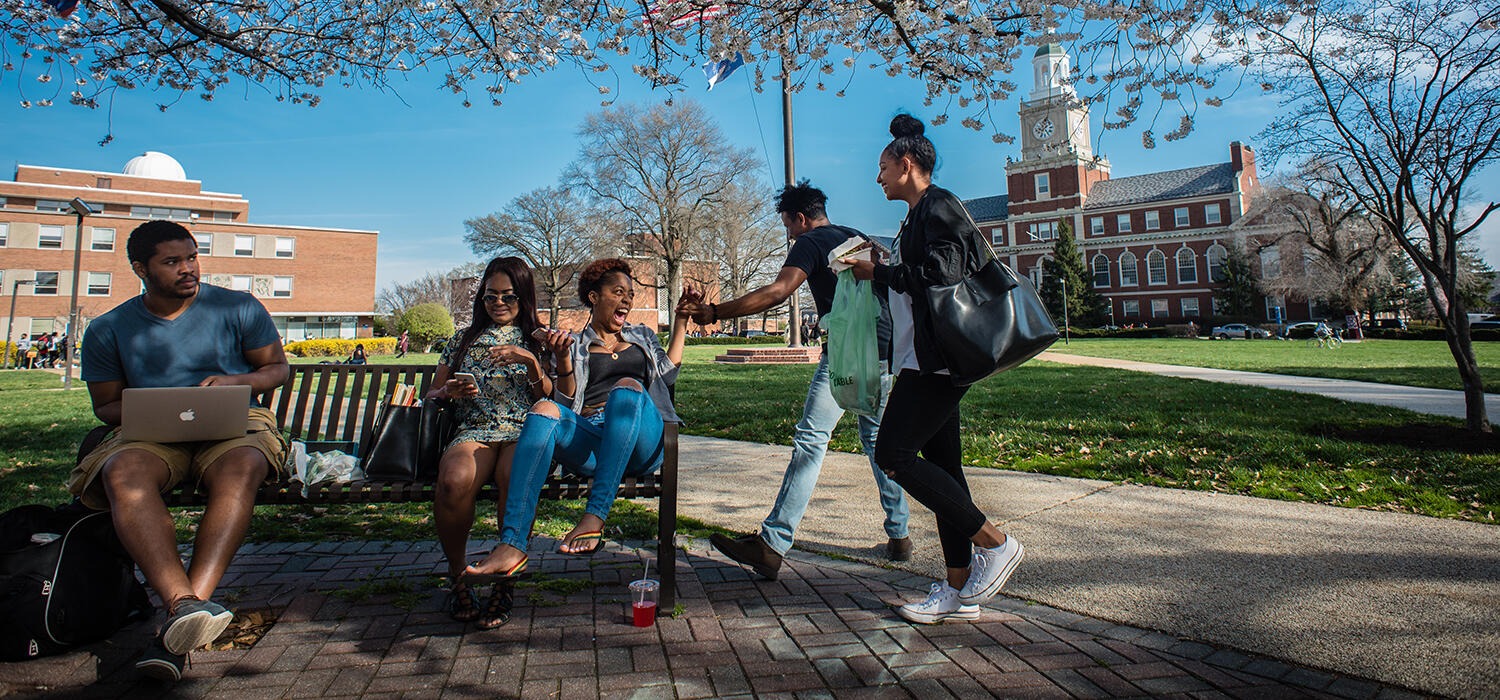
Black students who attend historically Black colleges and universities (HBCUs) are more satisfied with their college experiences than Black students who attend other types of postsecondary institutions, a new Urban Institute report reveals. HBCUs are often portrayed in headlines as financially troubled institutions with lower-than-average graduation rates. Though these descriptors are not completely inaccurate, for those who study HBCUs, and more importantly, for many HBCU alums, this finding of greater satisfaction among HBCU graduates makes perfect sense.
HBCUs versus predominantly white institutions
HBCUs, first established in 1837, by definition have as their principal mission “the education of black Americans.” In other words, regardless of the challenges HBCUs currently face, they are institutions whose history is rooted in providing educational opportunities to Black Americans.
Though an increasing number of predominantly white colleges and universities have widely publicized commitments to diversity via the creation of diversity task forces or the hiring of chief diversity officers, very few have experienced any substantive change in the racial composition of a predominantly white faculty, administration, or student body. And though espoused commitments by these universities to create a more diverse, equitable, and inclusive environment are in most cases genuine, the reality is, most postsecondary institutions’ history is rooted in serving predominantly, if not exclusively, white students.
The new Urban report highlights the differences in college satisfaction between Black students who attended a school with a historical mission to serve Black students and those who attended institutions that have over time incorporated serving diverse students into their missions. The report, which measured satisfaction across six areas, found that Black students at HBCUs rated their satisfaction higher than Black students who attended non-HBCUs across all six categories.

Practical implications
Black students’ higher rates of satisfaction at HBCUs over Black students at non-HBCUs is an acknowledgment that despite the challenges facing HBCUs, they still deliver positive experiences and build great pride among their graduates.
However, those challenges exist and continue to be a blemish on institutions that have been the foundation of Black prosperity in America. But in the proper context, those shortcomings are symptoms of systemic issues in postsecondary funding.
Many of the financial troubles plaguing HBCUs can largely be traced to historical federal and state underfunding. As the cost of providing essential infrastructure (e.g., technology) and support services (e.g., academic and mental health) for students have increased, state funds estimated at approximately $1.1 billion that should have gone to public HBCUs have often been redirected by state policymakers for other purposes. A recent budget analysis revealed that the state has underfunded Tennessee State University by $544 million since 1957. So, any discussion of HBCUs’ financial struggles must begin with acknowledgement of their historical underfunding.
As for graduation rates, HBCUs and non-HBCUs graduate Black students at the same rate. According to data from the Beginning Postsecondary Students Longitudinal Study (BPS), among Black students who first enrolled at an HBCU in 2011, 39 percent graduated with a bachelor’s degree by 2017, which is the same six-year graduation rate for Black students who began at a non-HBCU.
This is not a new phenomenon, as previous research by Fryer and Greenstone and Bowen, Chingos, and McPherson had similar results. And though a 39 percent graduation rate for Black students is nothing to celebrate at either type of institution, these graduation rates are not entirely equal.
BPS data also reveal that Black students at HBCUs are more likely to receive Pell grants, more likely to have a high school grade point average under 2.5, and less likely to have taken any advanced placement courses in high school. In other words, HBCUs are enrolling Black students who may not have even been accepted at many non-HBCUs and graduating them at the same rate—and doing so while being historically underfunded.
College experiences can be among the most influential in a person’s life. That Black students at HBCUs report higher levels of satisfaction with their college experiences than Black students at non-HBCUs speaks to the importance of having an institutional mission grounded in serving Black students.
And the fact that HBCUs graduate lower-income, less academically prepared Black students at the same rate as better-resourced institutions, speaks to the environment and culture of HBCUs that generate such high satisfaction. Just imagine what they could do if appropriately funded.
The Urban Institute has the evidence to show what it will take to create a society where everyone has a fair shot at achieving their vision of success.
Let’s build a future where everyone, everywhere has the opportunity and power to thrive
Urban is more determined than ever to partner with changemakers to unlock opportunities that give people across the country a fair shot at reaching their fullest potential. Invest in Urban to power this type of work.